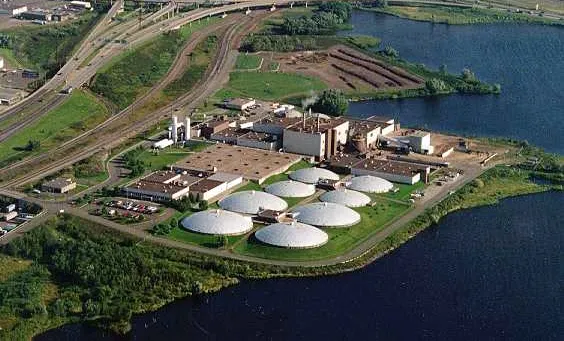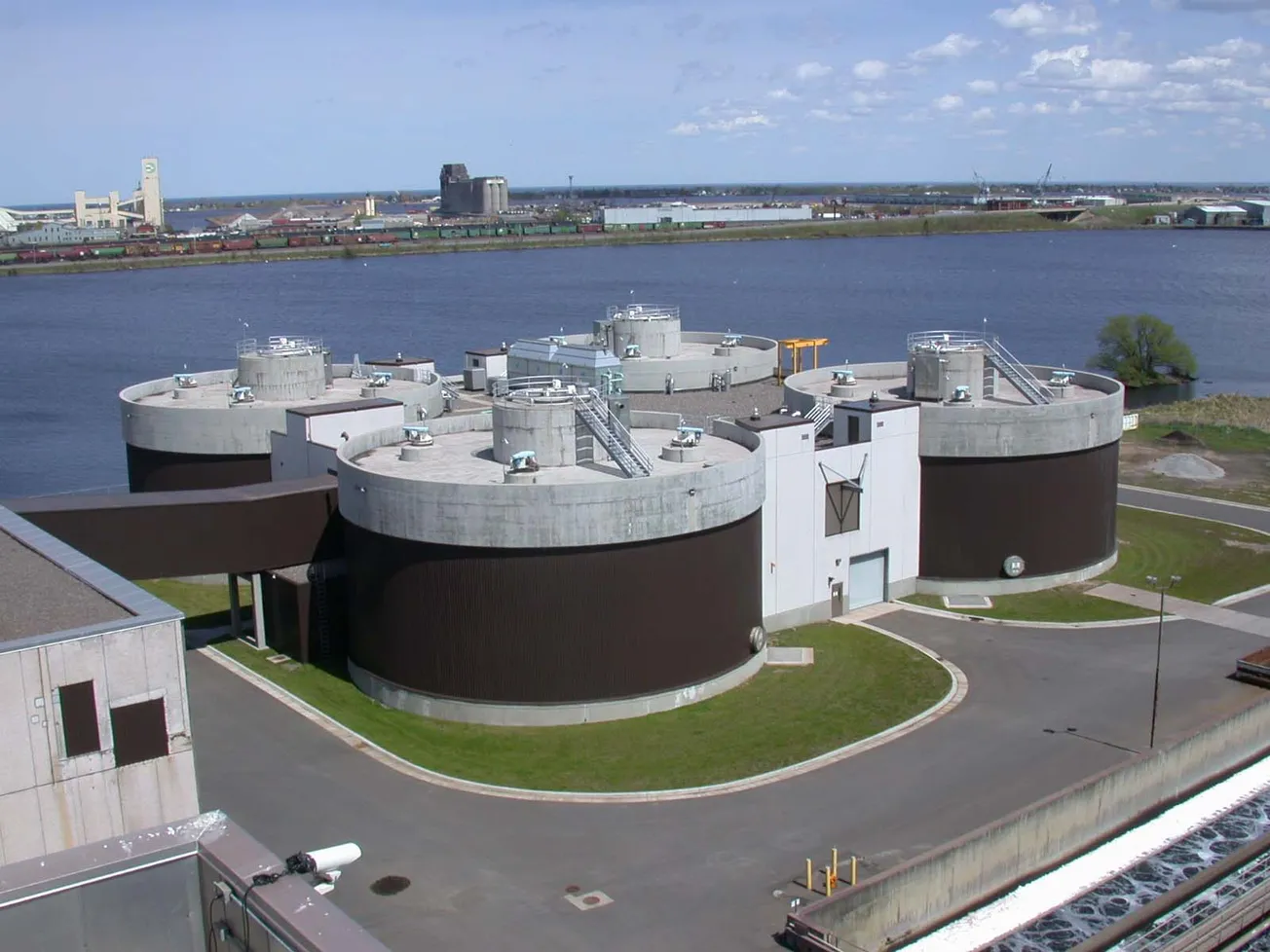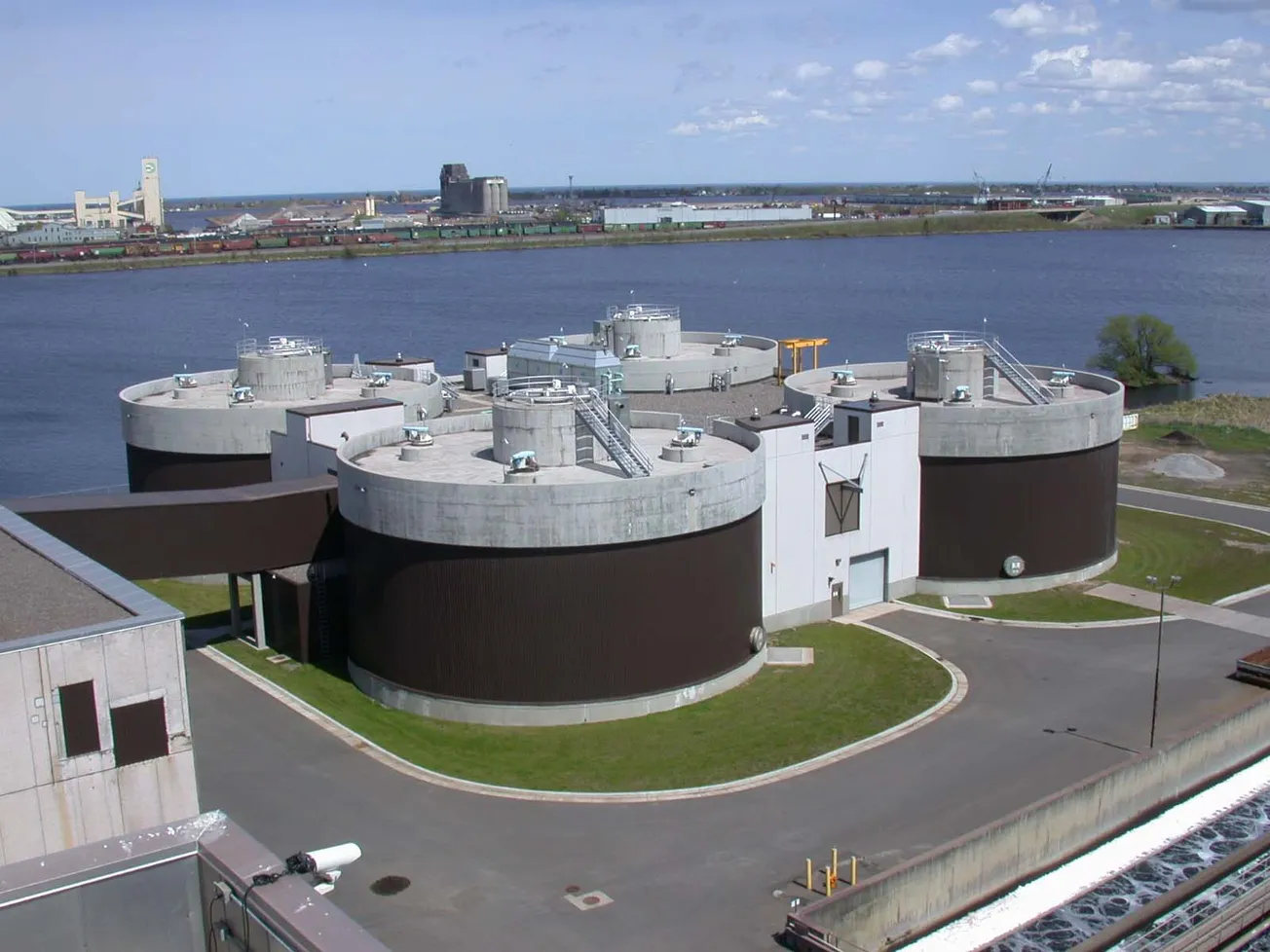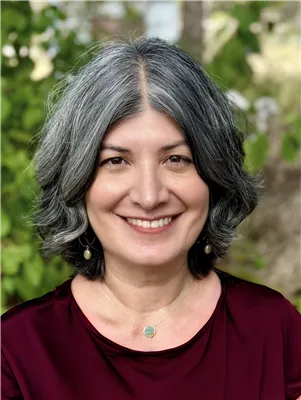Today marks the 45th anniversary of Clean Water Production at the Western Lake Superior Sanitary District. It is a momentous occasion that calls for reflection, gratitude and celebration.
WLSSD began operating its state-of-the-art wastewater treatment plant on the St. Louis River on September 25, 1978. Prior to its opening, untreated and under-treated sewage was discharged into the river from cities and industries, causing pollution in the River and Bay. Soon after the startup of the treatment plant, water quality in the river noticeably improved and the native fishery was on the rebound.
Today, the waters of the St. Louis River are once again popular for recreational fishing, swimming, canoeing, kayaking and other activities.
A group of former WLSSD staff members recently gathered to share their experiences of the days prior to the Regional Wastewater Treatment Plant.
Jack Ezell, former Manager of Planning and Technical Services and current WLSSD board member reminds us, “We’re gifted with this resource today, and it would be easy to lose if we forgot.”
The WLSSD has overcome numerous challenges throughout the year, adopted innovative technologies, and upheld the highest standards of environmental protection throughout this journey. And, its commitment to safeguarding the environment, public health, and the well-being of our community remains unwavering. Hear more about WLSSDs journey and why it’s critical that it keeps its mission at the forefront by clicking on the video link below:
https://youtu.be/Cn-hwg2tHDY?si=HG0E3ogVAnA8m7RM
Most recently, WLSSD was challenged with a rain event that took place on Sunday. The wastewater treatment plant recorded a sustained flow of over 100 million gallons per day (MGD) for over 14 hours. Typical flow to WLSSD is approximately 35 MGD, one-third of what was treated on Sunday.
The treatment plant is designed to clean wastewater exclusively; however, rain water can infiltrate the system due to cracks, breaks, and improper connections. The resulting increased flows may lead to wastewater overflows.
WLSSD experienced wastewater overflows at two manholes near 13th Avenue East and London road and one manhole in the Miller Hill Mall area. The overflows were resolved quickly and work continues to prevent future wet weather events.
Western Lake Superior Sanitary District provides wastewater and solid waste services within a 530 square mile service area and is a nationally recognized leader in pollution prevention. Governed by a nine-member citizen board, WLSSD is a special purpose subdivision of the State of Minnesota.
Its legislative service area includes the cities of Duluth, Cloquet, Carlton, Scanlon, Wrenshall, Hermantown, Proctor, Rice Lake and Thomson and the townships of Silverbrook, Twin Lakes, Canosia, Duluth, Grand Lake, Lakewood, Midway and Solway.





